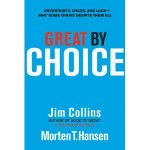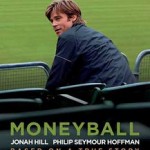Archive for the ‘research’ Category
Seeing The Song
I love Billy Joel’s music and I respect him as an artist. But I have to disagree with him on his generalization that “Before MTV music said LISTEN to me, and after MTV it said LOOK at me.”
I’d argue that pre-MTV rock music artists like Elvis Presley, The Beatles, The Who, The Stones, Led Zeppelin, Alice Cooper and KISS were very much visual as well as music acts. Fashion and attitude have been part of Rock N’ Roll culture since its inception.
During MTV’s early years, our team of researchers surveyed MTV viewers in those markets where the channel was available in order to learn their reactions to the songs we played. We used a methodology common to radio where the respondent was asked to rate a song based on how familiar they were with it and their level of positive or negative reaction to it. Early on, we were trying to determine a way to factor the visual variable into the equation and we found that the MTV viewers we spoke to frequently responded “I’ve seen that song”. Consequently, we changed the language in our survey to ask “Have you seen this song?”.
During my four years as MTV’s Director of Video Music Programming, it was my observation that the video component might have created some initial interest in a song but, if the music didn’t strike that responsive chord with viewers which catapults a song into the level of viable hit, the video was going to provide the necessary momentum to save the song.
It’s always been about the music.
Image may attract attention but, in the end, it’s the relevance of the music and the emotional connection it makes with the listener that really matters.
My Enhanced CX (Customer Experience)
Yesterday, I was having a problem renewing a couple of my website domains via my GoDaddy account. So, I called the customer service hotline. 
The guy who was assigned my call was efficient, learned about my issue then promptly fixed my problem and explained why I had encountered the difficulty. That was standard operating procedure.
What surprised and delighted me was what happened next.
Based on my information, GoDaddy’s rep knew that I lived in Saratoga Springs, New York. So, he asked me what I thought about jockey Ramon Dominguez’s accomplishment of winning 6 races at Saratoga Race Course over the weekend. 
His question started a conversation about the work I’m doing for the New York Racing Association this summer at Saratoga Race Course and about his family’s love of horse racing. He told me that he often takes his kids to Santa Anita in California but that his relatives have been to Saratoga and have recommended that he visit, too. He then told me that he and his family were planning to vacation in Saratoga Springs next summer. I told him that I thought they would really enjoy their visit, wished him well, thanked him for his help, and we ended out conversation.
For me, it was a terrific customer experience. Yes, we resolved my business problem but there was also an emotional connection and exchange of humanity. My opinion about and trust of GoDaddy was definitely improved by the experience.
In GoDaddy’s follow-up questionnaire, I suggested that they give that man a raise. I hope that they take my recommendation seriously.
The Health Of The Nation
On Thursday, the United States Supreme Court, SCOTUS to the politicos among us, will announce its decision on the Affordable Health Care Act or as master of rhetoric Dr. Frank Lunz has repositioned it, “Obamacare”. This collection of political cartoons pretty much summarizes the extent and divisiveness of the debate on this issue:





Of course, most of us have been more inclined to listen to the rhetoric of this debate than have actually bothered to read about the details. Here’s a link to the summary provided by the US Senate:
http://dpc.senate.gov/healthreformbill/healthbill52.pdf
Thinking, Fast and Slow

My wife, who is much smarter than I am, began reading this book based on a friend’s recommendation. But she decided that it wasn’t her kind of book. So, after reading the book jacket blurb, I decided to get the audio book from our library.
It might have just been the narrator’s read but I found myself feeling offended by the author’s arrogance. The tone of his observations seemed to me very condescending to anyone who wasn’t on his intellectual plane.
Don’t get me wrong. Kahneman shares some fascinating insights about how we think and about the “heuristics” or shortcuts we use when making decisions. It’s just that I found myself feeling annoyed while listening.
Then, I read Michael Lewis’ Vanity Fair interview with Daniel Kahneman. It turns out that Kahneman, who is a Nobel Prize winning psychologist, is kind of a shy and humble guy.
So, here’s my recommendation. Before reading this book, Google Michael Lewis’ November, 2011 Vanity Fair article, “The King Of Human Error” and read that. Also, take the quiz which accompanies the article.
I suspect that then you’ll enjoy a much better experience with this book than, initially, I did.
Geographic Literacy
My philosophy is that “it’s all about stories”.
Data is just information. But information doesn’t really mean anything until it’s in formation in the form of a story.
For some reason, we Americans tend to be geographically ignorant. Maybe that’s because our maps have been boring. That’s about to change. Check out Dave Imus’ award-winning Essential Geography of the United States of America.

Education And Digital Natives
We Baby Boomers are “digital immigrants”. We’ve had to learn to adapt to computers, email, digital downloads, smartphones, texting, tablets, etc. The Millennials are “digital natives”. To them, the constant stream of rapidly changing media tools have always been a part of their lives. Here’s an interesting infographic about “digital natives” and learning courtesy of Elnora Lowe:

Via: Voxy Blog
Thanks to Fred Jacobs of Jacobs Media for bringing this info to our attention.
How Ideals Power Growth & Profit
Jim Stengel is the former head of marketing for Proctor & Gamble. The ideas he expresses in this book are consistent to those being expressed by Daniel Pink in “A Whole New Mind” and Jim Collins in his latest book, “Great By Choice”.
Stengel preaches that it’s essential for business leaders to combine ideals and artistry, very right-brained functions, with rigorous left-brained analysis in order to create a brand leading product or service . He collaborated with WPP’s Millward Brown Optimor’s neuroscience unit to use MRI’s to measure how quickly people associate ideals with brands.
The Stengel 50 list was created from this research. These companies outperformed the S&P 500 by 400% over the first decade of this century. Most importantly, they discovered that associations with a brand’s perceived ideas have a strong relationship with consumer preference, consideration and choice.
According to Stengel, a Brand Ideal is the essence of the business which is embraced by everyone in the company , from the CEO to the receptionist, and is amplified by everything that the company does. In these cynical times, that’s a tough order. So, like Jim Collins’ concept of “the right person in the right seat on the bus”, Stengel has found that the leaders in his Stengel 50 companies devote a lot of time and attention to recruiting with the idea that one bad hire can be highly toxic.
Daniel Pink talks about the need to think “symphonically”. Apparently, Stengel agrees. He believes that CEO’s need to be “whole-brained” which , I believe, means that they need to take a holistic approach and to think in terms of decades rather than months, quarters, or years. He introduces the concept of the Brand Artist, someone who is accountable for the soul of the brand and its ideal. Stengel says that a company needs to measure its progress on the ideal not only with customers but with employees as well.
According to Stengel , a brand’s success relies on its ability to satisfy one of the following fundamental values: elicit joy, enable connection, inspire exploration, evoke pride, or positively impact society. Bottom-line: your brand has to walk the walk as well as talk the talk in a world that demands transparency and authenticity.
One company on the Stengel 50 list is Chipotle. I’ve never been to one of their restaurants and I thought of Chipotle as another Taco Bell-type franchise. Then, I saw their TV spot during the SuperBowl
and my attitude towards the Chipotle brand changed.
As usual, I “read” the audiobook version. At times, I found the writing to be a bit stilted. Nevertheless, I think you’ll find the stories about the various brands and the concepts in this book to be both useful and enlightening.
Great By Choice
The first time I learned about Jim Collins’ work was several years ago during my first job interview in a decade. I prepared for my interview by reviewing Harvey MacKay’s classic suggestions for responses to interview questions and doing my due diligence about the medical facility to which I was applying. However, when the interviewer’s first question was about how, in my position in the marketing/PR/communications department, I’d improve a patient’s experience, and then talked about getting the right people in the right seats on the bus, I knew that things had changed in the HR world.
“Great By Choice” is Jim Collins’ collaboration with his former student, Morten Hansen, to discover the facts and the myths about why certain organizations far exceed those of seemingly equal competitors. Collins and Hansen compare eight organizations: Southwest Airlines/ Pacific Southwest Airlines, Stryker/United States Surgical Corp., Progressive Insurance/Safeco Insurance, Intel/AMD, Microsoft/Apple, Amgen/Genetech, Biomet/Kirschner, and the 1911 Amundsen and Scott expeditions to reach the South Pole.
Collins and Hansen describe the high performers in their study cases as “10Xers” because these organizations didn’t just succeed but beat its industry index by at least 10 times. They identify three key characteristics of 10X leadership: fanatic discipline, empirical creativity, and productive paranoia. 10X leaders are passionately driven by a cause beyond themselves. As the authors note, all organizations experience both good and bad luck. It’s what one does with the luck they get which matters. They then offer their ideas about the characteristics which describe a “luck event”.
Collins and Hansen confront some entrenched myths to determine their validity. For instance, there’s the concept that a threat-filled world favors the speedy (“You’re either quick or dead”). Instead, the authors suggest that it’s better to figure out when it’s best to go fast and when it’s best to go slow. Also, there’s the firmly held belief that radical change on the outside requires radical internal changes. Collins & Hansen observe that just because an organization’s external environment is experiencing dramatic change it’s not necessarily a good idea for the organization to radically change itself.
“Great By Choice” presents some interesting concepts such as the “20 Mile March”, “Fire Bullets, Then Cannonballs”, “Return On Luck”, “Moore’s Law”, and SMaC. Collins’ and Hansen’s research presents useful answers to the question: Why do some companies thrive in uncertainty, even chaos, while other’s don’t?
No matter whether your endeavor is personal, public service-oriented, or in business, you’ll find the insights provided by this research to be helpful.
Reflections On 2011
Remember when you were a kid and it seemed to take forever for the holidays to arrive?
Now, every year seems to go by faster than the one before. Chalk it up to perception. When you’ve lived only 13 years, one year equals 1/13th of your life. When you’re thirty-five, a year equals 1/35th of your life. You get the picture.
I can’t say that the first year of the second decade of the 21st century has been my favorite year. But, as I reflect upon my personal experiences, I’m surprised at how many high points there are.
2011 marked a couple of significant anniversaries. My wife, Molly and I celebrated our 20th wedding anniversary in July. It amazes me that I’ve been married this long. In fact, it’s hard for me to think of myself now as not being married even though I maintained my bachelorhood longer than most.
This year also marked the Big 3-0 birthday of MTV: Music Television where I was privileged to be part of the channel’s original management team. It was fun to do some radio and print interviews about those early days at a channel which paved the way for television as we know it today. It was also nice to have my contribution acknowledged in the book, “I Want My MTV: The Uncensored Story of the Music Video Revolution” by Craig Marks and Rob Tannenbaum which was released in conjunction with the 30th anniversary.
Some other memories from 2011:
*My mother and younger brother spending the Christmas holidays with us in Saratoga.
*Our family vacation to Los Angeles and San Diego in March to visit with my wife’s cousin, John Woodcock and his wife, Susan. We were awakened at 8AM one morning at our beachfront hotel in San Diego by my daughter’s boyfriend in Saratoga who told us about the tsunami that hit Japan and was threatening America’s west coast. We’d gone to bed early and were oblivious to the situation. We certainly gained some perspective about what it’s like to live in Southern California.
*While in California, we were able to get some business done. Molly visited her client at TVG and met with the VP/Marketing at Santa Anita Raceway. I was able to meet with staff members at Loyola Marymount University’s student-run radio station, KXLU and to discuss media opportunities with former Albanian, Kevin Callahan while visiting him at KSON-FM, San Diego.
*Western Swing and Salsa dance lessons for Molly and me by our friend, David Levesque of Dancin’ Time. (She was good. Me, not so much.)
*Elton John with Leon Russell at Madison Square Garden in March. The tickets were a gift from my stepdaughter, Jessica.
*Being interviewed for Russian radio about American culture and media by my friend, journalist Vladimir Abarinov.
*Our youngest daughter, Sarah successfully transitioning from public high school to the private all-girl Emma Wilard School and embracing the experience of her senior year.
*The relief of learning that Sarah passed her driver’s test after being denied a passing score on her first 2 attempts.(I was dreading having to deal with an emotionally overwrought teenage girl who failed to pass on her 3rd try.)
*College campus visits with Sarah in July and October to New England, northern & western New York as well as the New York Finger Lakes region. I really enjoyed the conversations with my daughter and having the chance to watch her evolving maturity in handling the different situations we encountered during our trips.
It was good to make new friends during the past year and to reconnect with old friends and acquaintances such as: Joe Templin, Charles Warner, Scott Bingham, Dale Brooks, Michael Grace, Rosemary Young, Monica Mahaffey, Eric Strauss, Ray Patterson, Judi Clements, Bob Buchman, Jessie Scott, Mike Lembo, Batt Johnson, Pam Green, Rob Sisco, Hatem Dammak, Neerav Patel, Bill Polk, Susan Arbetter, Jay Werth, Bilel Besbes, Cindy Sivak, Rose Giangiobbe, Sierra Julie Sullivan, Dan & Jen Austin, Dick Heatherton, Joan Myers, Leslie Leventman, Tom Freston, George Gerrity, Holly Greene, Dale Willman, Ray Zoller, Joe Condon, Patrick Ryan, Michael Vallone, Joe Reilly, Dawn Dawson, David Levesque and Terry McNiff.
From a business standpoint, 2011 marked another year of evolution for Brindle Media with projects for Siena College and the New York Racing Association. My former boss at Albany Broadcasting, John Kelly asked me to work with Siena’s nationally-recognized radio station, WVCR-FM on focusing its programming product and strategizing for future development. During the summer, I once again worked with NYRA at world-renowned Saratoga Race Course to enhance the customer experience (CX) for and increase customer usage of the track’s computerized Self-Service Terminals (SSTs). In the Fall, I also created two targeted online newspapers using Paper.li, Buzz4Boomers designed for members of the Baby Boomer generation and 12866Buzz intended to provide news of neighborhood and social community interest for residents of Saratoga Springs. At this point, they’re both works in progress.
I tried to take advantage of as many learning opportunities as possible during the past year either by attending events such as Amy Mengel’s Social Media Breakfast Tech Valley, attending webinars, and reviewing audio or video interviews. Some webinars and interviews which I found enlightening this year included:
*Dan Zarella’s Hubspot webinars “Most Legendary Marketing Showdown”, “The Science of SEO”, “New Science of Social Media”, “The Science of Analytics”, “The Science of Timing” , and “The Science of Email Marketing”. www.Hubspot.com
*Reach Personal Branding’s Entrepreneurial Training Series www.ReachPersonalBranding.com
*Reach Personal Branding’s William Arruda’ss interviews with Tony Beshara, Gina Rudan, Seth Godin, Ken Blanchard, Stever Robbins, Bernadette Martin, Kevin Eikenberry, and Dr. Samantha Collins.
*Greig Well’s “Linkedin Insider Secrets” webinar.
*John Souza’s Social Media Magic University series about blogging, email marketing, PPC Marketing, Mobile Marketing, and SEO. www.SocialMediaMagicUniversity.com
*David Siteman Garland’s “Rise To The Top” interviews with Blogcast FM’s Srinivas Rao, Diamond Candles co-founder Justin Winter, social media legend Chris Brogan, author Steven Pressfield, and entrepreneur Lewis Howe. www.TheRiseToTheTop.com
*Daniel Pink’s “Office Hours” interviews with “Great By Choice” author Jim Collins and “The No A**-Hole Rule” author Bob Sutton. www.DanPink.com
*Edison Media’s Tom Webster’s presentation “Turning Social Media Monitoring Into Research”.
*Adam Metz’s webinar, “The Social Customer and The Art of War”. www.AdamMetz.com
*Mark Ramsey’s conversations with Ishita Gupta (from Seth Godin’s Domino Project), Livio Radio’s Jake Sigal, JINX’s Sean Gailey , Marketing Profs’ Ann Handley, Triton Media’s Jim Kerr, Pandora CEO Joe Kennedy, Guy Kawasaki, Seth Godin, Mandalay Entertainment Group chairman Peter Guber, Social Media Examiner’s Michael Stetzner, broadcast consultant & author Valerie Geller, KCRW-FM general
manager Jennifer Ferro, and advertising guru/author Jon Winsor. www.MarkRamseyMedia.com
I’m not a particularly fast reader so I rarely find time to read books. When I’m reading, it’s usually magazine articles or blogs. So, I’m a big fan of audiobooks. Some of my favorites this year were:
*David Brooks’ “The Social Animal”
*Tom Friedman’s “That Used To Be Us”
*Steven Levy’s “In The Plex”
*Tina Fey’s “Bossy Pants”
*David McCullough’s “The Greater Journey”
*Simon Winchester’s “Atlantic”
*Laura Hillenbrand’s “Unbroken”
*Sebastian Junger’s “War”
*Dick Cavett’s “Talk Show”
*Michael Lewis’ “Boomerang”
(I’ve just started listening to this book and I’m hooked).
You can read my reviews on my Linkedin account (www.Linkedin.com/in/REBuzzBrindle)
My favorite movies this year: “The King’s Speech” and “The Help”
In September, I drove downstate to NYC to see the play, “War Horse” at the Lincoln Center. I thought play itself was a bit trite but the design of the horse puppets and the puppetry itself were amazing. I’m debating whether or not to see the movie version.
My favorite TV shows remain CBS Sunday Morning, The Daily Show and The Colbert Report although my enjoyment of Colbert’s show is on the wane. It’s getting too predictable (like Rush Limbaugh’s talk show). This year, I’ve become a fan of NBC’s “Meet The Press”. With all due respect to the late Tim Russert , David Gregory has made the show much more interesting. “30 Rock” reruns have hooked me and I’m now looking forward to the show’s return in early January.” Saturday Night Live” is back on track. There’s a lot of talent in the current cast. I have to admit to enjoying the song & dance routines on “Glee” (talented cast, strong production). And PBS American Masters series ran a terrific documentary about Woody Allen this Fall. Watching “Midnight In Paris” is on my New Year’s Eve to-do list.
Best wishes for enlightenment, surprise, joy, good health, and prosperity in 2012.
Moneyball The Movie
“When you rule out an entire class of people from doing a job simply because of their appearance, you’re less likely to find the person best suited for the job.”-Michael Lewis in MONEYBALL.
Michael Lewis is a journalist who writes like a novelist. The first time I encountered Lewis’ work was in his book, THE NEW NEW THING. Understand that I’m a very slow book reader. My reading tends to be in the snack-o-tainment style of magazine articles and , now, blog pieces. It can easily take me a month to 6 months to read a book which is why I tend to prefer audiobooks which I can “read” during commutes.
THE NEW NEW THING was an exception. While accompanying my wife on a weekend business trip to Phoenix, I couldn’t stop reading it and completed the whole book in a couple of days. That’s when Michael Lewis became one of my favorite writers.
I don’t buy audiobooks. I get them free from the library. But I did buy the audiobook of MONEYBALL because I was fascinated with the concept of using sabermetrics to assess performance. To me, it was more like a textbook than a mere reading experience. But I was a little surprised when I learned that the book had been made into a movie. Guess I shouldn’t have been given that movie adaptation of “The Blind Side” was such a big hit.
During an interview about the movie version of THE BLIND SIDE, I’d heard Michael Lewis talk about how once he sells the film writes to a book he relinquishes control and is usually eliminated from the project. In his recent interview with Jon Stewart, Lewis indicated that he’d expected the movie adaptation of MONEYBALL to be a disaster but that he’d been pleasantly surprised.
We saw the MONEYBALL movie last night.
Apparently, Paul DePodesta, who is a central character in the book, did not want to be represented in the movie. So the character of Peter Brand as played by Jonah Hill was created as an amalgamation of DePodesta and other members of the Oakland A’s staff. Hill’s movie career has primarily been playing obnoxious geeky characters in Judd Apatow movies. He’s geeky but vulnerably likable in this role.
The book chronicles the pre-Oakland A’s experiences of several key characters: Billy Beane, Paul DePodesta, Chad Bradford, and Scott Haddeberg. We hear anecdotal observations about Beane and his mercurial nature but we don’t really get to know much about him. The movie is more centered around Billy as the main character and, with Brad Pitt in the starring role, we get to learn more of his experiences as a person. It could be titled “Moneyball:The Billy Beane Story”. I’m unclear about how much of the personal interactions between Billy Beane, his wife and her new partner or Billy and his daughter are fictionalized but they play well in the context of a movie. Pitt’s performance is relatively low-key with occasional outbursts and you find yourself rooting for both Beane and his team of outcasts as the underdogs. My emotional reaction reminded me a lot of those I experienced while watching the movie version of “Seabiscuit”
The book ends with the story about how Scott Haddeberg inadvertently broke his Louisville Slugger contract by grabbing the wrong bat when he was unexpectedly called in to pinch hit for what turned out to be a record-breaking game. The movie doesn’t include that story and instead ends with Billy Beane in a “dad” moment.
It works.
Postscript: I’m an advocate for Billy Beane’s sabermetrics approach but there is a certain irony that Tony LaRussa, who Billy forced out, has been the manager of two World Series contending teams since leaving the A’s organization while A’s have yet to make it into the Series. Tony likes to employ all those old baseball tricks like sacrifice bunts, etc that sabermetrics indicate are ineffective.




